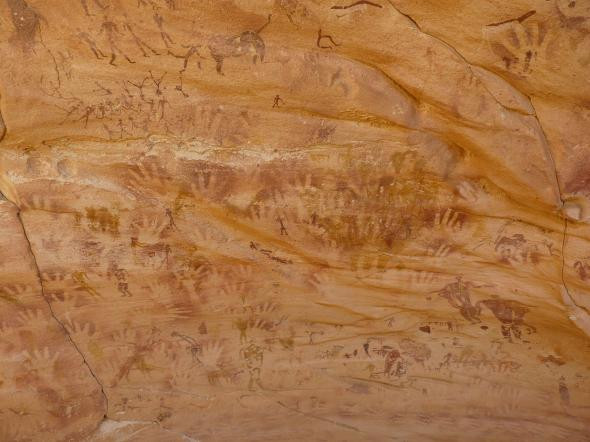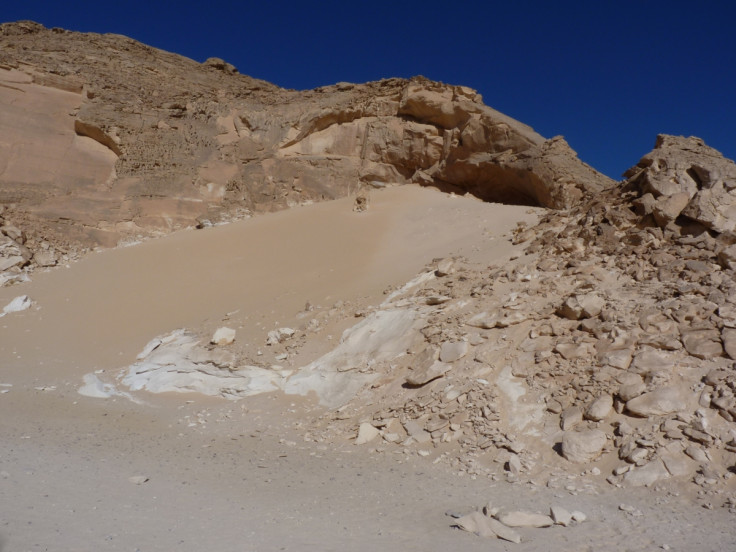Wadi Sura II: 8,000-year-old handprints on cave art found not to have human origins

Small handprints found in 8,000-year-old rock art in Egypt do not belong to humans but reptiles, archaeologists have discovered.
The Wadi Sura II shelter is a large rock cave discovered in the Libyan Desert in Egypt, in 2002. It is covered in rock paintings, some of them dating from as far as the Early or Mid-Holocene eras, about 8,000 years ago.
Among the shapes featured on the wall of the cave, tiny handprints thought to be those of a baby or of a small primate have long intrigued researchers.
Lizard hands
Led by Emmanuelle Honoré of the McDonald Institute for Archaeological Research, a team decided to find out the origins of the handprints. They carried out a morphometric analysis to compare the prints with samples of babies' hands, born at term or pre-term.

The scientists found big differences not only in size and proportions, but also in shape and morphology, suggesting the hands featured in the cave probably did not belong to humans.
Comparing it with the legs of other living animals, they found that the prints more closely resembled the forelegs of desert lizards called varan, or of small crocodiles. The discovery is a major one for the archaeology community as it is one of the few recorded usage of five-fingered animal prints in ancient rock art.
"Wadi Sûra II can be considered as the most important rock art site in North Africa, not only because of the huge number of rock paintings and engravings but also for the variety of the depictions. Since our identification, we can even say that those paintings are unique, as there is no animal hand-stencilling recorded so far in the whole Sahara, to our knowledge.", Honoré told IBTimes UK.
Knowledge of ancient populations

However, the symbolic significance of the reptile handprints remain a mystery to Honoré and her team. They do not know whether the stencils were made using live animals or their severed hands, and do not understand what this method meant for the population living in the Wadi Surra II shelter, 80,00 years ago.
"The paintings are likely to be dated from 6000 BC – except from that, we know very little. With this research, we are now entering the intellectual life of prehistoric groups and what we find is really unexpected. It does not correspond to the general sketch that was established since decades by us, as rock art researchers", Honoré said.
Her team's findings may open up new possibilities to learn more about the behaviour and the culture of ancient communities living during the Holocene period.
© Copyright IBTimes 2025. All rights reserved.






















